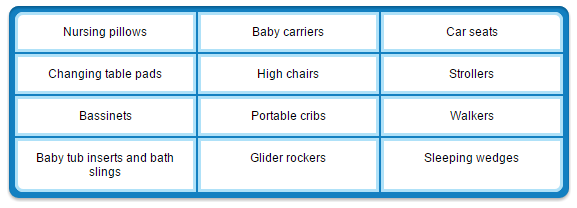How This Chemical Makes You Fat & Diabetic
I spent most of my adult life (ages 18 – 29) living in apartments on a budget. Like other downtown condo-living natives, this meant all of my home furnishings came from IKEA, Target and Walmart – because let’s face it, they are affordable and yet trendy.
What I was not aware of, was the hidden toxin that had been sprayed all over it prior to being shipped to the warehouse and then personally assembled in my home. I was also unaware of the fact that the gas from these chemicals can continue to seep into the carpet and walls. It then becomes a sort of force field that is constantly transferred to the dust that collects in our homes only to continuously expose us day in and day out. Chemical Crap!
In fact, most of us in the Western world are being exposed to this hidden toxin right now. It’s responsible for slowing metabolism, disrupting hormones and causing cancer. For many it can trigger asthma and breathing problems, headaches, joint pain and even infertility.
I’m talking about flame retardants. And before you roll your eyes and assume that your not exposed, realize that it’s estimated that 75% of us are toxic with these chemicals already.
“We found that several toxic flame retardants are in people's bodies. When you sit on your couch, you want to relax, not get exposed to chemicals that may cause cancer,” said lead author, Robin Dodson, ScD”
Recent tests also revealed that most people have no less than six different flame retardants in their system. Say Wow. No really, say it! The most shocking of all was chlorinated tris (TDCIPP), a chemical that was phased out of children’s pajamas decades ago.
Every time I read about flame retardants and how they’re running rampant within our bodies, I think of the “new furniture smell” that lingers for days after you set it up. Is that smell making me sick?
This is why I personally detox and cleanse my body every 3-4 months out of the year. If you're interested in my clinical detox system, check out The Real Health Blueprint Launching in January!
Flame Retardants: A Quick History
In his article, Americans Have More Toxic Flame Retardants in Their Bodies Than Previously Thought, Dr. Joseph Mercola explains how flame retardants were initially used in furniture manufacturing to prevent cigarette fires.
Flame-retardant chemicals were developed in the 1970’s, when 40 percent of Americans smoked and cigarettes were a major cause of fires. The tobacco industry, under increasing pressure to make fire-safe cigarettes, resisted the push for self-extinguishing cigarettes and instead created a fake front group called the National Association of State Fire Marshals.
In 1975, the California Technical Bulletin 117 (TB117) was passed and required furniture sold in California to withstand a 12-second exposure to a small flame without igniting. This state requirement quickly became an international standard.
Since then, their use has skyrocketed. Research published in Environmental Science and Technology revealed that 85% of couch foam samples contained flame retardants.
Aside from couches and mattresses, such chemicals were detected in 60 percent of car seats tested by The Ecology Center while a separate study in Environmental Science & Technology also detected flame-retardant chemicals in 80 percent of the following children’s products tested:
TAKE THIS FREE TEST
The generous scientists at Duke University’s Superfund Research Center have implemented a sampling system to find out if your furniture contains levels of flame retardants. The process works as follows:
1. Complete their online form to receive a sample ID.
2. Prepare your sample:
- Cut a piece of foam, 1 cubic centimeter in size (a little bigger than the size of a marble)
- Wrap the foam in aluminum foil
- Place each foam sample in its own re-sealable sandwich bag; be sure to completely seal the bag
- Attach or write the Sample ID Number on the re-sealable sandwich bag
3. Mail it in. Enclose the following in a box or envelope:
- Foam sample with Sample ID Number written on bag (Step 2)
- Copy of confirmation email (Step 1)
Mail to:
Gretchen Kroeger
Box 90328 – LSRC
Duke University
Durham, NC 27708
It’s pretty cool that this sort of service is being offered to the public considering there are really no other easily accessible services like this available.
The Health Risks
PBDEs or Flame Retardants resemble the molecular structure of PCBs, which have been linked to cancer, reproductive problems, and impaired fetal brain development. Like PCBs, even though certain PBDEs have been banned in some US states and the European Union, they persist in the environment and accumulate in your body – and can still exist in products imported from other countries.
Higher levels of PBDEs have even been linked to fertility issues, which may be likened the chemical structure resembling thyroid hormones.
Earlier this year, another study also found that children whose mothers were exposed to flame retardant chemicals during pregnancy have lower IQs and are more prone to hyperactivity disorders. Researchers also found that children involved in the study had concentrations 5 times higher in their bodies compared to their mothers. Could this be the reason why cancer rates are so high in children these days? Makes ya wonder huh?
Flame Retardants Make You Fat & Diabetic.
Exposure to a variety of brominated flame retardants have been associated with the development of type 2 diabetes and metabolic syndrome in people with low, background levels of exposure. Animals exposed to flame retardants develop high blood sugar, gain weight, and show immune system effects and changes in gene expression linked to type 1 diabetes. Holy cow. As if just sitting on the couch doesn’t make us fat enough, now the chemicals you get from your couch are making you fat as well!
The newest science suggests that endocrine-disrupting chemicals (EDCs) such as flame retardants may also be the real trigger behind the obesity epidemic. The association is becoming so clear that they’ve been dubbed obesogens.
Chemical flame retardants are the most common EDCs in most homes. They’re found in foam-filled furniture, in most kinds of mattresses (including memory foam) and pillows, in many fabrics, and in ordinary house dust. Released continuously indoors, they also build up in the human body. Nothing has escaped the global flood of these compounds — they’ve even been detected in marine mammals as well as in outdoor air.
Don’t panic. Just start where you can. Even small steps will make a difference. Gradually ridding your home of synthetic foams, including memory foam, is the best way to begin. And the key place to begin is where you spend the most extended time — in the bedroom. Your natural bedroom — and your baby’s — will go a long way to reduce your family’s exposures to flame retardants and many other suspect chemicals.
To read studies directly related to flame retardant exposure click here!
Tips To Reduce Current Exposure
- Start undergoing a Detox & Cleanse program every 3-4 months. I would recommend that you check out my own system launching in January at http://www.realhealthblueprint.com
- Be especially careful with polyurethane foam products manufactured prior to 2005, such as upholstered furniture,
mattresses, and pillows, as these are most likely to contain PBDEs. If you have any of these in your home, inspect them carefully and replace ripped covers and/or any foam that appears to be breaking down. - Older carpet padding is another major source of PBDEs, so take precautions when removing old carpet.
- Deca PBDEs can be found in electronics like TVs, cell phones, kitchen appliances, fans, toner cartridges, and more. It’s a good idea to wash your hands after handling such items, especially before eating, and at the very least be sure you don’t let infants mouth any of these items (like your TV remote control or cell phone).





